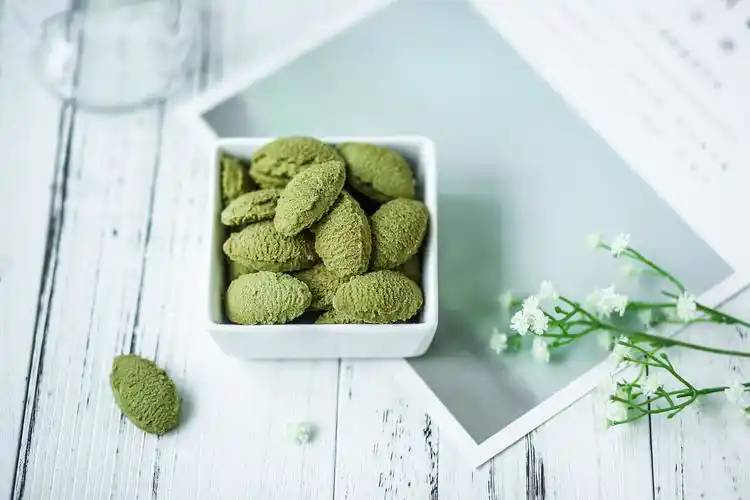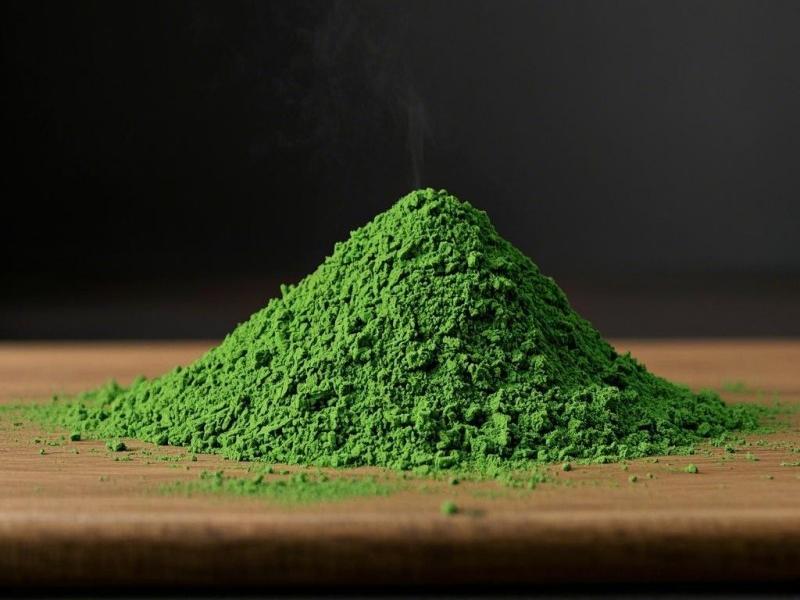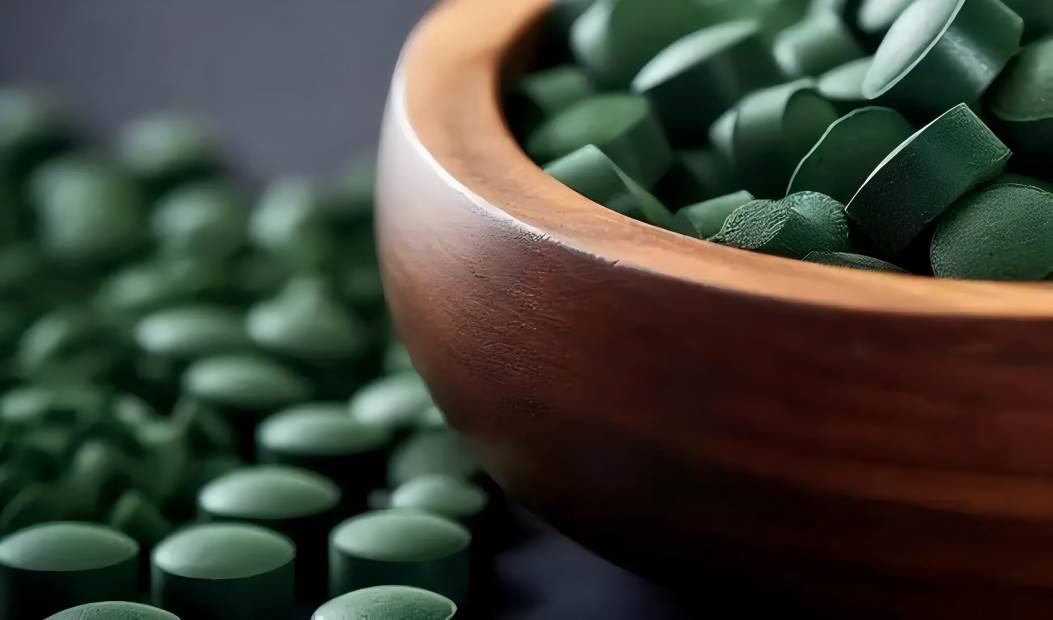Study on Spirulina and Heavy Metals
Spirulina is the common name for the prokaryotic organism Arthrospira, a type of blue-green plankton that naturally occurs in alkaline water (pH of about 9.5), with a few species being benthic [1]. Spirulina consists of unicellular cells without branching filaments. The length of the algal filaments is 200 to 500 μm, and the width is 5 to 10 μm. They are loosely or tightly coiled in a regular spiral shape. After growing to a certain length (number of spirals), they reproduce by fragmentation. In 1519, the Spanish scientist Hernando Cortez first discovered spirulina in Lake Texcoco in Mexico [2]. In the Republic of Chad, South Africa, it is customary to mix dried spirulina algal sludge cake powder with ketchup and pepper, and then pour it over food (rice, beans, fish, meat) [3]. Spirulina can not only be used in food (functional foods, additives), medicine (natural carotene) and the feed industry, but also has broad application prospects in the fields of the environment (detection, remediation), biotechnology, renewable energy and other fields.
At present, the total global production of spirulina is about 12,000 t/year, with a maximum yield of 91.0 t/(hm2·year) [2]. There are more than 60 spirulina farming enterprises in China, with a total annual output accounting for 80% of global production, or about 9,600 tons [4]; the farming area is about 750 hm2 [5], and the unit output is only about 13 t/(hm2· year). The level of spirulina farming and management needs to be urgently improved. This paper mainly reviews the influencing factors in the cultivation, harvesting and drying processes of spirulina, as well as the research progress in the nutritional characteristics and safety of spirulina, with the aim of providing comprehensive information for the spirulina industry and the food industry.

1 Spirulina cultivation and influencing factors
There are about 38 species of spirulina, and the two main species cultivated artificially are S. platensis and S. maxima [6-7]. During growth and development, the morphology of spirulina is easily altered by environmental stress, accompanied by changes in physiology, nutrition, genetics, proteomics, etc. [8].
1.1 Composition of the spirulina culture medium
As a microalgae that can be cultivated on a large scale, the nutritional composition of spirulina is closely related to the composition of the culture medium. In actual production, the Zarrouk medium [1–2], the modified Zarrouk medium [1], the Rao medium, and the Oferr medium [2] are commonly used, and other simple media can also be used for cultivation [9]. Spirulina traditionally requires a large amount of NaHCO3 in the cultivation process. This is to provide a sufficient carbon source and to keep the medium pH alkaline, which is conducive to the growth of spirulina. During the algal expansion period, the concentration of NaHCO3 in the medium is generally 8 to 10 g/L, during normal cultivation, NaHCO3 can be reduced to 2.5 to 4.0 g/L. Olguín et al. mixed seawater and freshwater in a volume ratio of 1:4 and added 2% (volume fraction) of the supernatant after anaerobic fermentation of pig manure as a culture medium for cultivating spirulina from 1998 to 2001. At the same time, 2 g/L NaHCO3 was added to the culture tank on days 0, 3, and 5 to maintain the pH of the water at 9.5. The average production of spirulina in the summer reached 14.4 g/(m2·d) (the depth of the pool water was 0.15 m) and 15.1 g/(m2·d) (the depth of the pool water was 0 .20 m); the utilization rate of ammoniacal nitrogen in the culture water is 84% to 96%, and the utilization rate of phosphorus is 72% to 87% [10].
The composition of the spirulina culture medium should be based on the water quality of the culture water. In order to avoid the growth and pollution of other algae and the quality of spirulina, the culture water must meet the standards. Water from the urban pipe network is a convenient choice. The water after cultivation needs to be properly treated before reuse. Among these treatments, reverse osmosis has the least impact on spirulina growth and can also ensure the stability of spirulina quality.
The main supplements to the culture medium between batches are sodium nitrate or urea. Urea and nitrate ions can supply spirulina with sufficient nitrogen, but high concentrations can be toxic. Spirulina can grow in a culture medium containing only nitrate or urea, but the combined use of the two nitrogen sources is beneficial to the growth of spirulina. The amount of added phosphate, Mg2 + and Ca2 + needs to be controlled. K + can be increased appropriately, preferably not more than 5 times the concentration of Na + [2]. The composition of the culture medium can be determined based on actual growth conditions.
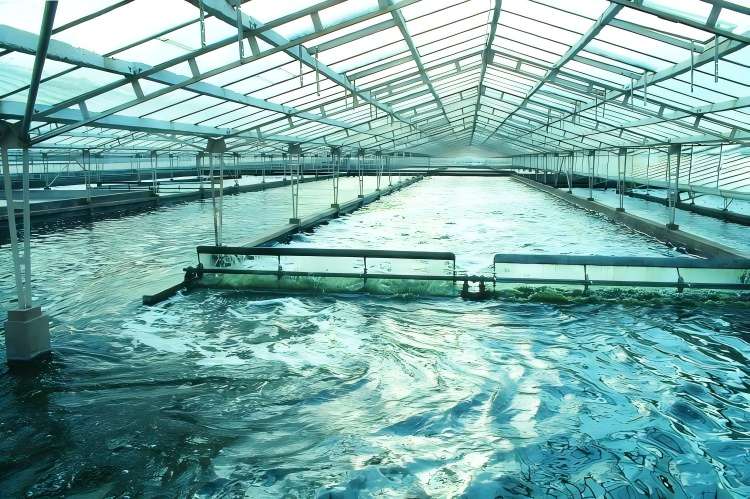
Algae, similar to terrestrial plants, can fix carbon dioxide (CO2) through photosynthesis. Theory shows that 1 hm2 of microalgae can use 12.6% of solar energy to produce 280 t/year of dry matter, which is equivalent to the bioconversion of 513 t of CO2 [11-12]. Sydney et al. found that the CO2 bioconversion capacity of Spirulina platensis LEB-52 was 318.61 mg/(L·d) [13]. Organic amines are a type of CO2 capture sorbent with high carbon sequestration efficiency. Da Rosa et al. used CO2 instead of NaHCO3 in the Zarrouk medium as a carbon source, The supply of CO2 was 0.36 mL CO2 per milliliter of culture medium per day, followed by aeration for 2 minutes per hour during the light period. The final protein content of the obtained Spirulina powder (Spirulina sp. LEB 18) was 60.8%, the carbohydrate content was 14.4%, and the fat content was 10.0% [14]; In order to prolong the retention time of CO2 in the culture medium, 0.2 mmol/L ethanolamine (MEA) was added to the culture medium.
The protein content of the resulting spirulina powder was 44.4%, the carbohydrate content was 28.2%, and the fat content was 8.3%; spirulina production increased by 31.4%. However, the addition of ethanolamine affected the biological conversion of nitrogen by spirulina, resulting in spirulina powder containing more carbohydrates.
Wang Zhaoyin et al. compared the effects of ethanolamine, diethanolamine, triethanolamine and N-methyl-diethanolamine on the growth and carbon fixation of spirulina, and found that triethanolamine can significantly promote the biological conversion of spirulina to CO2, increase the yield of spirulina, and increase the rate of carbon fixation [15]; however, similar to the results of da Rosa et al. [14], the polysaccharide content of spirulina increased while the protein content decreased. Organic amines are toxic, and their use in the cultivation of edible spirulina poses safety risks.
1.2 Factors affecting spirulina cultivation
The growth of spirulina not only depends on the composition of the culture medium and the supply of CO2, but is also closely related to the algae species, the culture pond, the geographical location of the culture site, the culture season (temperature, light), other factors (pH, pests), etc.
1.2.1 Algae species
The growth rate of Arthrospira platensis is not the same as that of Arthrospira maxima. Under the same culture conditions, Arthrospira platensis grows faster than Arthrospira maxima. The photosynthetic and respiratory rates of different strains of spirulina are different. The photosynthetic rates of Arthrospira platensis from Lake Chad in Africa and Arthrospira maxima from Lake Texcoco in Mexico are much higher than those of Arthrospira platensis from the alkaline lake in the Ordos sand area of Inner Mongolia (Lake Chahan Naoer) [16]. The daily change in the photosynthetic rate of spirulina indicates that the photosynthetic rate of spirulina reaches a maximum at 13:00 every day, and the photosynthetic rate decreases before or after this time point. The respiration rate of spirulina is negatively correlated with the growth rate and increases with increasing temperature.
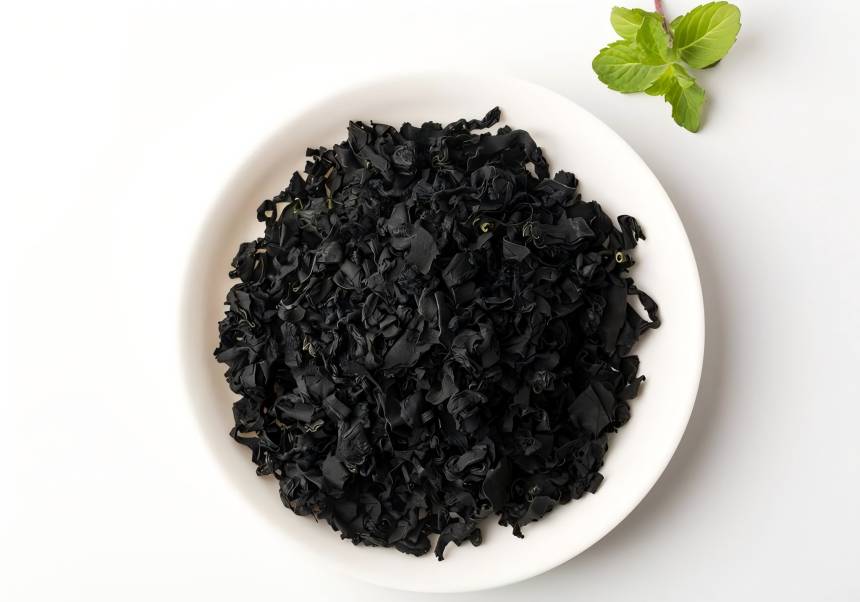
1.2.2 Cultivation pond
Spirulina cultivation is divided into heterotrophic cultivation and autotrophic cultivation. Large-scale cultivation is all autotrophic cultivation, which includes open cultivation systems (open ponds, raceway ponds, circular ponds), closed cultivation systems (photobioreactors), and complex systems. Soni et al. evaluated different spirulina cultivation systems based on the following indicators: space requirements, area/volume ratio, evaporation, water loss, CO2 loss, temperature, climate dependence, process control, cleanability, biomass quality, biomass density, harvest efficiency, harvest cost, light utilization rate, most costly process, pollution control, investment amount, production volume, and hydrodynamic stress on spirulina.
Open culture systems include natural lakes, coastal lakes, ponds, artificial ponds or containers, etc. The most common ones are artificially excavated long and narrow pools, circular pools and racetrack pools. Open culture systems are relatively simple to construct and operate, but have the disadvantages of relatively low yields, low light utilization, evaporation losses, CO2 fugitive losses, large footprints and susceptibility to contamination (including animals and other heterotrophs).
The photo-bioreactors in closed aquaculture systems come in various types, such as vertical column, tray, tube and plate types. The light sources include natural light and artificial light, which are convenient for biomass accumulation and can minimise pollution. The materials of the reaction system include glass, polyester plastic and other materials. However, system cleaning and large-scale farming still require further technological improvement.
The composite system mainly involves making the photobioreactor similar to an open pond in order to reduce operating costs. There are two types: one type covers the open pond to block external pollution, and the other type expands the diameter of the photobioreactor pipe as much as possible to resemble an open pond [18]. This composite system combines the advantages of both the open pond and the photobioreactor, thus ensuring minimal pollution while maximizing yield and minimizing CO2 loss. However, it still requires a large amount of land area and technical breakthroughs.
In order to increase the biological harvest of spirulina, the focus of research and development has been on the biofilm attachment culture method [19]. The biofilm attachment culture technology established by the team of Liu Tianzong from the Qingdao Institute of Bioenergy and Bioprocess Technology of the Chinese Academy of Sciences uses CO2 as the carbon source, and the spirulina yield reaches 38 g/(m2·d), with a CO2 utilization rate of 75.1%. the protein content of spirulina powder is over 60%, but the construction cost of the entire pilot system is 200 US dollars/m2, which is much higher than that of the traditional open pool. Spirulina cultivation using CO2 as a carbon source is an important way to improve the environmental impact of spirulina cultivation and reduce cultivation costs. It has become a trend in the development of microalgae cultivation technology. However, further scientific and technological research is needed to improve the utilization rate of CO2 and reduce the cost of carbon supplementation [20].
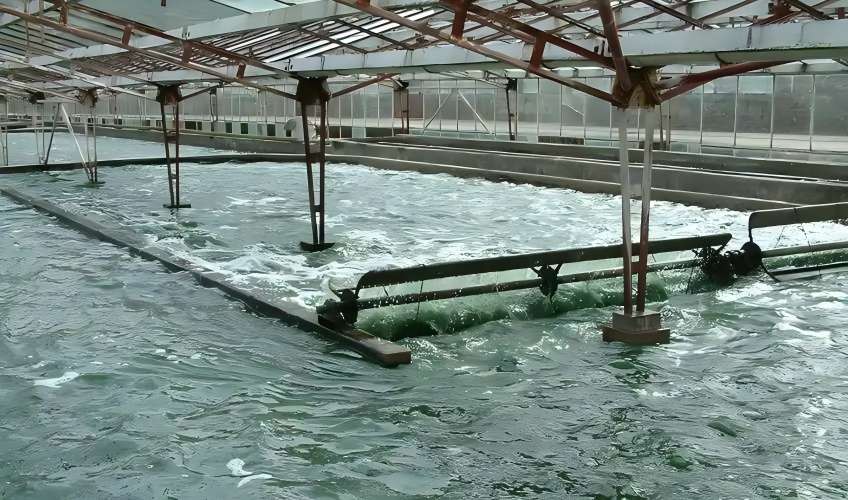
1.2.3 Temperature
Temperature is one of the important factors affecting the growth of spirulina. Spirulina can grow at temperatures below 45 ℃. Temperatures below 17 ℃ and above 38 ℃ will inhibit the growth of spirulina, but it will not die. The optimum growth temperature for spirulina is 29 ~ 35 ℃. The effect of temperature on the growth of spirulina is significant in terms of protein and carbohydrate composition, but not in terms of fat and γ-linolenic acid [21].
1.2.4 Light
The quality of the light source, the light intensity and the duration of the light are important factors affecting the growth of algae [10]. In practical cultivation of spirulina, a light flux of 30% is recommended, except in the morning when the water temperature in the cultivation tank needs to be raised quickly. Spirulina growth only occurs in the presence of light, but spirulina needs to synthesize proteins and pigments during the intervals without light, so long-term light for 24 h/d is not recommended.
Bezerra et al. increased the light intensity (photosynthetic photon flux density) during the cultivation of spirulina from 36 μmol/(m2·s) to 72 μmol/(m2·s), and the maximum cell concentration increased from 5200 mg/L to 5800 mg/L. When the illumination was further increased to 108 μmol/(m2·s), the time to obtain the maximum cell concentration decreased from 8 to 6 days [22]. This shows that low light intensity is more suitable for the growth of new ecological algae filaments, while high light intensity can shorten the growth cycle of spirulina [23]. In 2004, Danesi et al. also reached a similar conclusion in 2004 [24]. Using urea as the nitrogen source for spirulina, the ATP and NADPH produced by rapid photosynthesis at light intensities of 2,000 to 5,000 lx can accelerate cell growth, but when the cell concentration reaches 5,800 mg/L, cell growth stops due to saturation of the light flux density.
1.2.5 pH
The optimum pH for spirulina cultivation is 9.0–11.0. An alkaline pH can prevent contamination by other algae strains and also influence the enrichment of pigments and proteins in spirulina. When the pH is higher than 11, the spirulina filaments will clump together, become shorter, undergo cell lysis, and the intracellular contents will leak out. The color of the culture gradually turns yellowish green, and eventually the algae die[2]. The color and growth rate of Spirulina platensis vary significantly with pH. At a pH of 8.5 to 9.5, the growth rate of Spirulina increases with increasing pH, but at a pH of 9.5 to 11.0, the growth rate of Spirulina gradually decreases with increasing pH. After 8 days of cultivation, the dry cell mass of spirulina decreases with increasing pH [25].
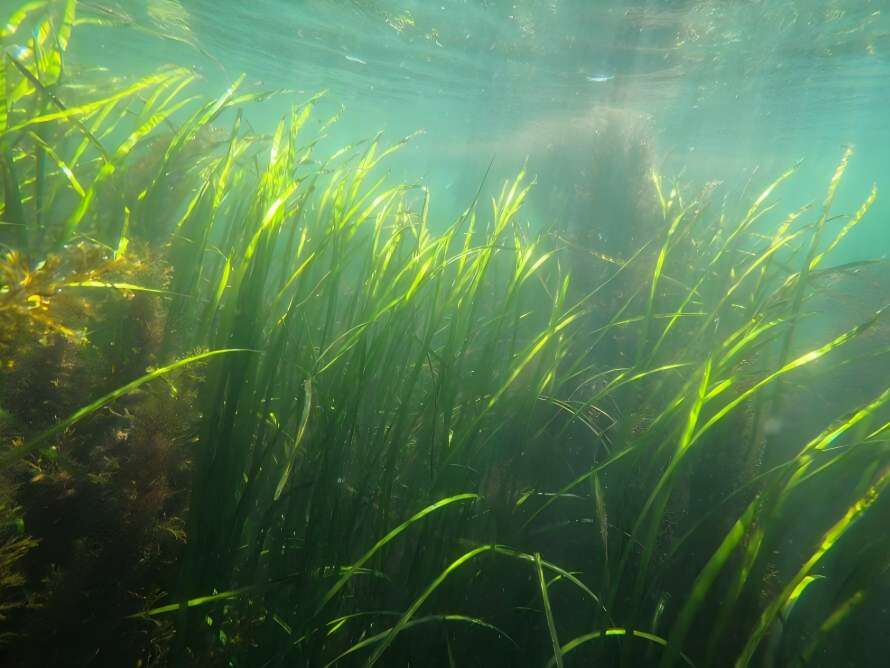
1.2.6 Mixing and aeration
Large-scale cultivation of spirulina is currently carried out using the liquid suspension method. The culture medium is periodically stirred during the cultivation process to ensure the homogeneity of the nutrient solution and the consistency of the light intensity received by the spirulina filaments. Mixing and aeration are essential for producing high-density algae filaments and high-quality spirulina products. Mixing and aeration (air) can provide the spirulina algae filaments in the culture tank with a uniform light exposure, while also helping to distribute carbon dioxide gas and remove the dissolved oxygen that inhibits spirulina growth. In raceway ponds, a mixing speed of 5–60 cm/s is usually used. A mixing speed that is too low will result in a dead zone at the corners of the raceway pond (this can be avoided by making the corners of the raceway pond curved). A mixing speed that is too high will require higher energy consumption and the resulting shear forces will increase the breakage of the algae filaments. In Zarrouk medium without NaHCO3, the optimal parameters for spirulina are a light intensity below 200 μmol/(m2·s) and an aeration rate of 0.0056 m/s with 0.5% carbon dioxide [26]. The changes in the culture parameters of spirulina protein content in different laboratory-scale cultures are shown in Table 2 [27].
1.2.7 Pests
At present, the farming of spirulina is often damaged by the rotifer Brachionus plicatilis. In severe cases, the rotifers can devour spirulina in large quantities, leading to a complete loss and causing disastrous losses. There are two main methods for preventing and controlling the rotifers in the spirulina culture solution: physical filtration (using a 250-mesh screen or finer) to remove the adult rotifers and chemical control. Chemical control involves the use of strong oxidants or poisons such as bleaching powder, copper sulfate, and potassium permanganate to kill both spirulina and rotifers, and then cleaning the culture tank to re-seed and cultivate. The physical control method is not completely filtered, and some adults, larvae, and almost all eggs return to the culture tank with the filtrate, requiring additional filtration. Moreover, as the number of filtration times increases, the number of days between hazards decreases. Although chemical control can control the harm for a longer period of time, it causes a certain economic loss because it kills the spirulina at one time. At the same time, re-cultivation wastes time and money, resulting in increased production costs. In addition, the alternating use of abamectin and urea can reduce the drug resistance of rotifers [28-29].
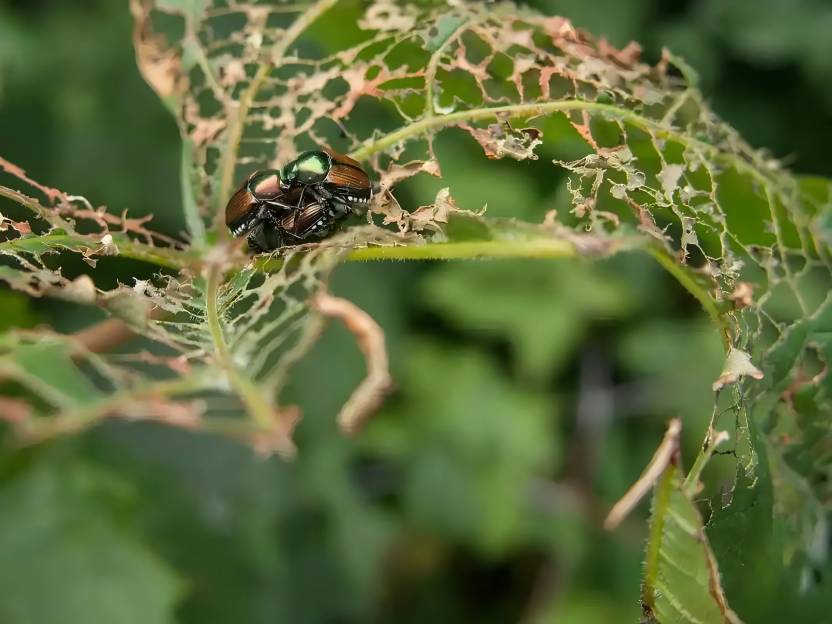
Other pests that can be encountered in spirulina farming include daphnia, half-browed insects, protozoa and water flies. A 40-mesh screen can be used to remove/reduce the number of water flies (larvae and pupae) in the algal sludge and other impurities, and reduce the number of insect fragments in the algal flour [30].
2. Harvesting and drying of spirulina
2.1. Harvesting of spirulina
In theory, harvesting should be carried out when the concentration of protein in the filaments is at its highest. However, in practice, the cultivation water is usually measured for absorbance, and harvesting is carried out when the absorbance at 560 nm is >1.0 [31]. There are also reports that harvesting is carried out when the absorbance at 680 nm is >0.8 [32].
Spirulina harvesting generally involves three main steps: the collection and separation of spirulina filaments (algal cells), the cleaning of spirulina aggregates (i.e., algal sludge), and the drying of spirulina. The techniques used for harvesting spirulina algae filaments (algal cells) include filtration, flocculation and sedimentation, and centrifugation and sedimentation. The cleaning process includes rinsing, ion exchange, electrodialysis, ultrasonic cleaning, etc., and drying includes natural sun drying, freeze drying, spray drying, drum drying and frying, etc. Improving the method of harvesting spirulina algae filaments, increasing the efficiency of harvesting, and reducing production costs remain the focus of industry efforts.
The mesh density of the filter screen or filter cloth used for harvesting spirulina is generally less than 50 μm, so that the spirulina filaments can be effectively separated from the culture medium. The commonly used filter screens are inclined screens and vibrating screens. The inclined screen has a screen area of 2 to 4 m2 and a screen aperture of 380 to 500 mesh, and can filter 10 to 18 m3 /h of spirulina culture liquid [33]. Under the premise of the same harvesting efficiency, the screen area required for the vibrating screen is about 1/3 of the screen area of the fixed inclined screen, but the vibrating screen is not suitable for large-scale harvesting. The deformation and breakage of the spirulina mycelium caused by vibration reduces the spirulina yield. Although fresh spirulina can be consumed directly, it is not suitable for long-term storage. The shelf life of edible fresh spirulina is only 6 h [2]. Dried spirulina powder can be stored for more than one year.
The flocculation of spirulina can be achieved quickly using the flocculation effect of Ca2 +. However, the amount of flocculant used is large, and the salt content of the flocculated algae is high, making subsequent processing difficult. Traditional filtration also has the drawbacks of being inefficient and resulting in high losses, and so improvements are needed. Lai et al. used chitosan and eggshell as biological flocculants to harvest spirulina. They found that 325-mesh eggshell powder, when dissolved in hydrochloric acid solution, can achieve a maximum efficiency of 97.2% after flocculation for 8 minutes at 4 g/L and pH 4. and chitosan dissolved in hydrochloric acid, flocculated for 50 min at 50 mg/L and pH 8, with a maximum efficiency of 80% [34]. Although the yield of eggshells is higher, the chitosan flocculant is closer to practical production in terms of the reuse of nutrient solutions.
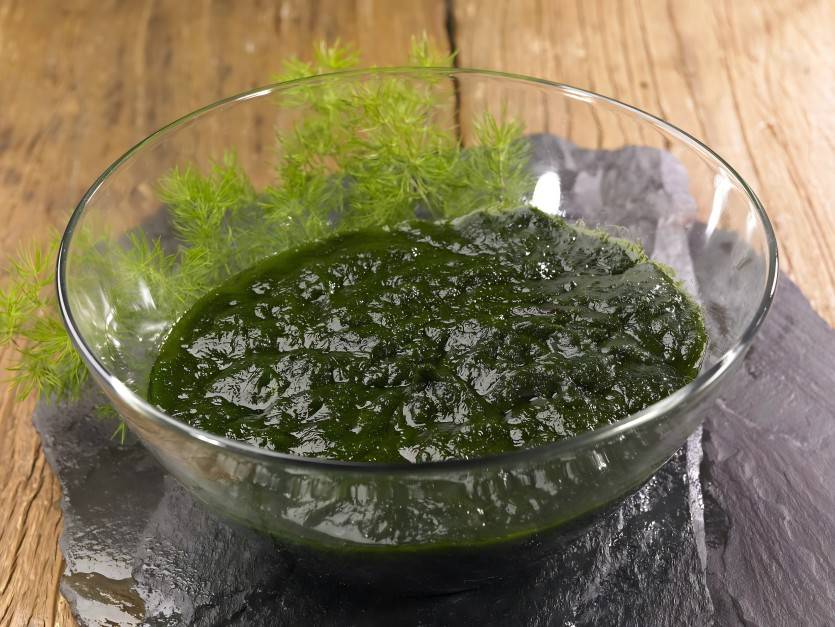
2.2 Drying of spirulina
Nouri et al. compared the effects of natural drying, air drying, microwave drying, freeze drying, vacuum drying and conventional hot air drying on the physical and chemical composition and antioxidant properties of spirulina [35]. Vacuum drying helps to retain the antioxidant activity and total phenolic substances in spirulina powder, while spray drying and freeze drying help to retain the unsaturated fatty acids in spirulina. Freeze drying causes a significant loss of sodium, potassium, magnesium, manganese, calcium and phosphorus, while the other drying methods have no significant effect on the metal elements.
The use of a support with a pore size of φ = 80 μm facilitates the rapid drying of spirulina (hot air convection drying). The drying time of spirulina algal mud cakes with a size of 80 mm × 80 mm × 3 mm can be reduced by 30%. The drying time of extruded spirulina algal mud strips (φ = 3 mm × 120 mm) spaced 10 or 20 mm apart can reduce the drying time by 35% [36].
Companies always try to reduce the loss of spirulina nutrients and obtain products with maximum purity while keeping the drying process cost under control. Because the cell walls of spirulina are particularly thin and fragile, natural sun drying has been widely used as the most primitive and traditional drying method. However, natural sun drying must be very fast, otherwise the chlorophyll will be destroyed and the dried product will turn blue. Although freeze-drying is considered the most suitable method for drying spirulina, its high cost and complex process means that it is relatively underused. Spray drying is the most common method of spirulina drying in actual production. The extent of nutrient loss in spirulina from different drying processes is shown in Table 3.
3 Nutrition and safety of spirulina
3.1 Nutrition of spirulina
Spirulina is very nutritious, with protein content accounting for 60% to 70% of the dry mass. It is also rich in vitamin B12 and iron, which are not commonly found in plants. The vitamin B12 content is 2 to 4 times that found in the liver, and the iron concentration is 8 to 12 times that of common plant iron. Spirulina also contains phycocyanin, which has anti-tumor effects, and is touted as the best food of the future [45]. In 2003, the United Nations established the Intergovernmental Institution for the Use of Micro-algae Spirulina Against Malnutrition (IIMSAM) to promote the development and use of spirulina to combat hunger and malnutrition in developing countries [2].
The content of functional ingredients in spirulina products from different companies is not the same. This difference is not only related to the algae species, but also due to the inconsistent cultivation conditions such as temperature, pH value, culture medium, light, etc. For example, the protein content of spirulina varies between 17% and 73% (dry mass) [30]. The amino acid composition of some commercially available spirulina products is shown in Table 4 [33, 46-48].
The amino acid score method is one of the widely used methods for protein quality evaluation. Based on the essential amino acid requirements of adults [50], the essential amino acid scores of different spirulina samples are shown in Table 5. Table 5 shows that, similar to cereal proteins, the limiting amino acid in spirulina protein is lysine. However, the amino acid scores of spirulina products from different origins and brands are all greater than 100. Therefore, spirulina is a high-quality protein that meets all the essential amino acid requirements of the human body. The digestibility of spirulina therefore becomes the first limiting factor in the amino acid score of spirulina [50], so the corrected amino acid score of spirulina is equal to the digestibility of spirulina.
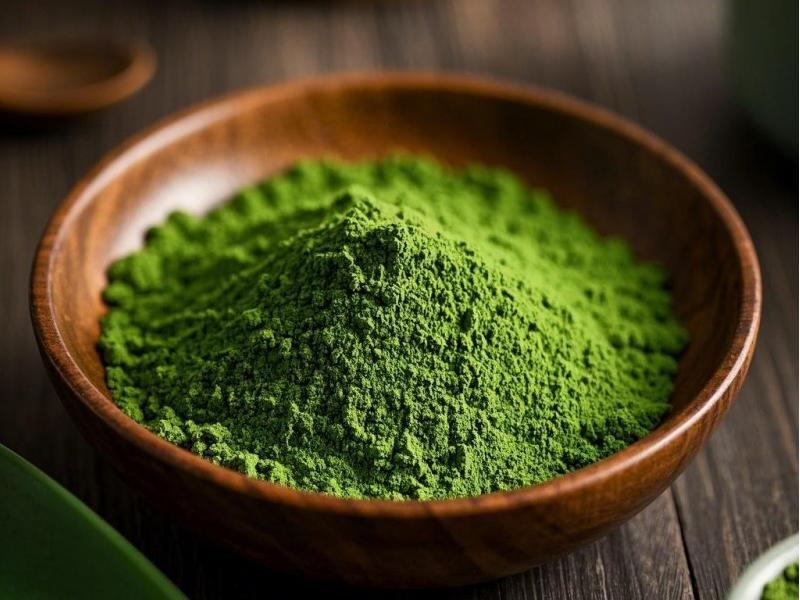
Spirulina's cell wall is similar to the peptidoglycan cell wall of gram-negative bacteria and is very easy to digest. It has been reported that the average in vitro digestion and absorption rate of spirulina is 61% [51], the digestion and absorption rate of its protein is 70% to 85% [52], and the bioavailability of spirulina cell wall polysaccharides reaches 86% [53]. However, different researchers use inconsistent methods for digestion and absorption testing, and the comparability of the data is relatively poor. It should not be ignored that the processing technology can change the in vitro digestion and absorption rate of spirulina [54], and the in vitro digestion and absorption rates of spirulina dried in a drum and naturally dried are 84% and 76%, respectively.
3.2 Safety of spirulina
Like most microalgae, spirulina can adsorb pesticide residues such as dichlorodiphenyltrichloroethane (DDT) [55], heavy metals (Cr3+, Cd2+, Cu2+, Zn2+, As, Hg, etc.) [56–59], petroleum hydrocarbons [60] and estrogens (17α-ethinylestradiol, 17β-estradiol) [61], etc., so spirulina is also considered a hot material for sewage treatment [62]. In the production of edible spirulina, the main unsafe factors are the effects of contamination by heavy metals (lead, arsenic, etc.), biotoxins, etc., in the cultivation process, as well as thermal contamination (e.g., polycyclic aromatic hydrocarbons) during the drying process, contamination by nitrate/nitrite, sulfite residues, and radiation dose residues.
3.2.1 Heavy metals
At present, the spirulina powder produced by companies in the south of China generally has excessive lead content, while the spirulina powder produced by companies in the north (mainly in the Inner Mongolia Autonomous Region) has high arsenic content. In 2012, there was extensive media coverage of China's spirulina farming industry and spirulina products due to the pollution of Chenghai Lake (excess lead content), which cast doubt on the quality of spirulina. The composition and content of heavy metals in spirulina products are closely related to the culture water, and also to the heavy metal residues in the culture medium (raw materials such as sodium carbonate or sodium bicarbonate) during the cultivation process. GB 2762-2017 “Food Safety National Standard Limits for Contaminants in Food” stipulates that the upper limit of lead content in spirulina and its products is 2.0 mg/kg (dry weight). The European Union has set the limit for lead residues in dietary supplements at 3.0 mg/kg, but it has been reported that the lead residue in spirulina varies between 0.1 and 15.0 mg/kg [63-64]. Zhao Nan found that the lead residue in domestic spirulina powder was 0.03 to 1.71 mg/kg. However, the author's team found that the lead content of some commercially available spirulina powder samples exceeded 2.0 mg/kg. Lead residue is still one of the urgent problems to be solved in the cultivation of spirulina [65].
Arsenic is a metalloid that occurs in various forms in the environment, including soil, rocks and rivers. It ranks 20th among the 92 elements that make up the earth's crust. Natural arsenic ore enters water bodies during natural weathering and rainwater washing, and often exists in the form of arsenite and arsenate. Arsenic can be divided into organic and inorganic arsenic. Inorganic arsenic can be further divided into three forms: arsenic, arsenic (III) and arsenic (V). Arsenic (III) is the most toxic, while organic arsenic is less toxic to the human body. Organic arsenic compounds such as arsenate betaine and arsenate choline, which are commonly found in aquatic products, are not toxic to the human body and are easily excreted. Spirulina has the characteristic of enriching arsenic. When the arsenic concentration in the spirulina culture water reaches 0.04 mg/L, the arsenic content in the Lake Chad Spirulina powder exceeds 1.0 mg/kg [66].
The arsenic residue in the original powder of spirulina in China is 0.01 to 0.41 mg/kg [65]. However, the author's team found that the arsenic content of many samples exceeded the arsenic residue limit for solid nutritional supplements (0.5 mg/kg, GB 2762-2017 “National Food Safety Standard Limits for Contaminants in Food”), but inorganic arsenic is less than 0.02 mg/kg. It is recommended that when China's GB/T 16919-1997 “Edible Spirulina Powder” and NY/T 1709-2011 “Green Food Algae and Products” are subsequently revised, the arsenic index should be clearly defined as inorganic arsenic.
Lead is neurotoxic, and lead exposure can impair learning and memory in children during development. The neurotoxicity of combined lead and cadmium exposure is stronger than that of lead and cadmium exposure alone [67]. The European Union has set a limit of 1.0 mg/kg for cadmium residues in dietary supplements. Muys et al. found that the cadmium residue in spirulina was 0.01 to 0.17 mg/kg, and the cadmium residue in Chinese spirulina powder was 0.003 to 0.123 mg/kg. All reported data are relatively ideal in terms of cadmium residue [27]. The European Union has set the mercury residue in dietary supplements at 0.1 mg/kg; no limit has been set for nickel residues. Muys et al. found that the mercury residue in spirulina samples was 0.02 to 0.11 mg/kg, and the nickel residue was 1.1 to 3.4 mg/kg [27].
3.2.2 Polycyclic aromatic hydrocarbons
Polycyclic aromatic hydrocarbons (PAHs) are derived from natural sources and human activities, with the most significant source being incomplete combustion of organic matter. Spirulina may be contaminated with PAHs during the drying process, depending on the heat source (coal, organic matter, natural gas), heating method (direct contact, indirect contact) and heating temperature. On October 27, 2015, EU (EU) 2015/1933 of 27 October 2015 supplements the limit values for PAHs in foodstuffs (EU) No 1881/2006. The EU limit for PAH residues in dietary supplements containing spirulina and its products is benzo[a]pyrene ≤ 10 μg/kg; and the sum of the four PAHs benzo[a]anthracene (BaA), chrysene (CHR), benzo[b]fluoranthene (BbF) and benzo[a]pyrene (BaP) is ≤50 μg/kg [68]. In China, there are currently no regulations on the PAH residues in spirulina and its products. Zelinkova et al. tested the PAH residues in spirulina dietary supplements sold in Ireland [69], and the results are shown in Table 6. In general, when benzo[a]pyrene exceeds the standard, the sum of the four PAHs also exceeds the standard.
3.2.3 Other safety factors
Muys et al. detected nitrate concentrations in spirulina samples ranging from 8 to 368 mg/kg. Although these data contribute only a limited amount of total nitrogen in the raw material, high nitrate residues may be caused by the use of nitrate as a nitrogen source during cultivation [27]. Provided that the spirulina is adequately washed during subsequent processing, the level of nitrite reflects the degree of raw material spoilage during processing. The standard for nitrite residues in fruit and vegetable juices is 4 mg/kg, while the allowable daily intake (ADI) for nitrate is 3.7 mg/kg body weight.
The food industry refers to sulfites as a group of substances including sulfur dioxide, sodium hydrogen sulfite, sodium sulfite, sodium metabisulfite, sodium metabisulfite, potassium metabisulfite, etc. Since sulfites can be produced by the fermentation of food raw materials, and it has been reported that sulfites are toxic to reproduction [70] and can trigger allergic reactions such as asthma [71], some countries strictly control sulfites in spirulina to trace the spoilage of spirulina raw materials during processing. The European Union and the United States require that food products with more than 10 mg/kg of sulfur dioxide and sulfites (calculated as SO2) be labeled. On August 6, 2019, Germany notified a batch of food supplements from Taiwan, China as unqualified due to the presence of the undeclared allergen sulfites (22 mg/kg).
The most commonly reported algal toxins in spirulina are mainly microcystins (MC). As a type of cyanobacterial toxin, MC is currently the most frequently exposed, most widely contaminated, and most harmful hepatotoxic algal toxin [72]. It has teratogenic, carcinogenic, and mutagenic effects and is also the strongest liver tumor promoter discovered so far. MC has about 100 structural variants, of which microcystin LR (MC-LR), classified as a Group 2B carcinogen, is the most toxic [73]. In 2002, Xu Haibin et al. tested 19 types of 71 commercially available spirulina products for microcystin and found that the average contamination level was 317.2 ng/g, and the average levels of microcystin contamination in tablets and capsules were 142.7 and 222.6 ng/g, respectively [74]. In 2001, Draisci et al. reported that five different brands of spirulina tablets and capsules collected from Roman suppliers three samples not only contained up to 10 μg/g of dihydrohomoanatoxin-a, a neurotoxin, but two of them also contained the isomer of anatoxin-a (18 and 19 μg/g, respectively) [75].
On November 28, 2018, the Ministry of Health, Labor and Welfare of Japan issued the document Yosho Shokuhin Shuha No. 1128 No. 3: Revision of the testing methods for foods exposed to radiation, Appendices II, III, IV-VI, which relate to livestock and fishery products, agricultural products, etc., and the addition of Appendix “IV-VI Radiation Exposure”, which adds the inspection of spirulina irradiated, The number of inspections was 10 pieces [76].
3.3 Spirulina standards
The quality standards for spirulina powder in different countries and regions are shown in Table 7 [65, 77].
Table 7 shows that the quality standards for spirulina focus more on the quality and microbiological safety of the product itself, and that possible biological and chemical contamination have not yet been included as control standards. However, since more than 90% of spirulina is consumed as a dietary supplement, it is necessary to monitor factors that may affect the safety of spirulina products, especially possible indicators of contamination in the water used for cultivation.
4 Conclusions and discussion
Spirulina is a high-quality microbial protein source, and its industrial chain consists of four links: cultivation, primary processing (algal flour), further processing (algal tablets, spirulina extracts and other finished products), and finished product applications. This paper summarizes the upstream cultivation, harvesting, and primary processing of the spirulina industrial chain. The cultivation and processing of spirulina are extremely demanding. Spirulina cultivation is greatly affected by external environmental factors. The water quality suitable for cultivation must be highly alkaline, high in temperature and high in light. The cultivation process must prevent contamination by other algae or microorganisms. The harvesting and rough processing of spirulina involves processes such as pumping, rinsing, filtering and drying. The timeliness of drying will seriously affect the quality of spirulina powder.
Pollution of the water used for cultivation poses a challenge to the upstream part of China's spirulina industry chain, and product quality standards (heavy metals, etc.) need to be further improved. The industry needs to formulate an operational or processing guide from the aspects of water sources, raw materials for production, algae cultivation, large-scale cultivation, harvesting, drying, processing, packaging, and treatment of aquaculture wastewater. The production cost of spirulina still cannot meet market demand, and it needs to be solved through technological innovation and large-scale cultivation. Reducing nutrient loss during production and processing or integrating with the rapidly developing Internet of Things industry to achieve fresh food delivery is another direction for the development and extension of the spirulina industry chain.
References:
[1] Wang Zhizhong. Research on key factors in the production and processing of Spirulina platensis from the alkaline lake in the Ordos Plateau [D]. Hohhot: Inner Mongolia Agricultural University, 2015.
[2]Soni R A,Sudhakar K,Rana R S. Spirulina - from growth to nutritional product : a review [J]. Trends in Food Science and Technology,2017,69 : 157 -171.
[3]Henrikson R. Earth food Spirulina[M].6th ed. Hawaii : Ronore Enterprises,Inc.,2009 : 18.
[4]Chen J,Wang Y,Benemann J R , et al.Microalgal industry in China :challenges and prospects[J].Journal of Applied Phycology,2016,28(2) :715-725.
[5] Zhang Xuecheng, Xue Mingxiong. The current situation and development potential of China's spirulina industry [J]. Bioindustry Technology, 2012(2): 47-53.
[6] Ministry of Health. Announcement of the Ministry of Health of the People's Republic of China No. 17 of 2004 [J]. Chinese Journal of Food Hygiene, 2004, 16(6): 570.
[7] State Bureau of Technical Supervision. Edible spirulina powder: GB/T 16919-1997 [S]. Beijing: China Standards Press, 1997.
[8] Wang Fushuang, Dong Shirui, Wang Suying. Research progress on the morphological development of spirulina [J]. Biotechnology Bulletin, 2016, 32(8): 28-33.
[9] Qiao Chen, Li Shuyuan. Spirulina from the Ordos Plateau alkali lake [M]. Beijing: Science Press, 2013 (3): 332-337.
[10]Olguín E J,Galicia S,Mercado G,et al.Annual productivity of Spirulina ( Arthrospira ) and nutrient removal in a pig wastewater recycling process under tropical conditions[J].Journal of Applied Phycology,2003,15 (2 /3) : 249-257.
[11]Bilanovic D,Andargatchew A,Kroeger T,et al. Freshwater and marine microalgae sequestering of CO2 at different C and N concentrations-response surface methodology analysis[J].Energy Conversion and Management,2009,50(2) : 262-267.
[12]Ceullar -Bermudez S P,Garcia -Perez J S,Rittmann B E,et al.Photosynthetic bioenergy utilizing CO2 : an approach on flue gases utilization for third generation biofuels[J]. Journal of Cleaner Production,2015,98 :53-65.
[13]Sydney E B,Sturm W,de Carvalho J C,et al. Potential carbon dioxide fixation by industrially important microalgae [J ]. Bioresource Technology,2010,101 ( 15) : 5892-5896.
[14]da Rosa G M,Moraes L,Cardias B B,et al. Chemical absorption and CO2 biofixation via the cultivation of Spirulina in semicontinuous mode with nutrient recycle [J]. Bioresource Technology,2015,192 : 321-327.
[15] Wang Zhaoyin, Li Yifeng, Zhang Xu, et al. Effect of organic amines on the growth and carbon sequestration of spirulina [J]. Journal of Chemical Engineering of Universities, 2017, 31 (2): 377-386.
[16] Liu Hua. Comparative study on the photosynthetic physiology of spirulina [D]. Hohhot: Inner Mongolia Agricultural University, 2002.
[17]Pires J C M,Alvim-Ferraz M C M,Martins F G,et al.Carbon dioxide capture from flue gases using microalgae: engineering aspects and biorefinery concept[J].Renewable and Sustainable Energy Reviews,2012,16(5) : 3043-3053.
[18]Zittelli G C,Biondi N,Rodolfi L,et al.Photobioreactors for mass production of microalgae[M]/ /Handbook of microalgal culture : applied phycology and biotechnology.Oxford: Blackwell Publishing, 2013 :225-266.
[19] Zhang L. Optimization of the process conditions for the attachment culture of spirulina platensis and porphyridium cruentum [D]. Qingdao: Ocean University of China, 2015.
[20]Wang J F,Cheng W T,Liu W,et al. Field study on attached cultivation of Arthrospira( Spirulina) with carbon dioxide as carbon source[J].Bioresource Technology,2019,283 :270-276.
[21]de Oliveira M A C L,Monteiro M P C,Robbs P G,et al.Growth and chemical composition of Spirulina maxima and Spirulina platensis biomass at different temperatures [J]. Aquaculture International,1999,7 (4) : 261-275.
[22]Bezerra R P,Montoya E Y O,Sato S,et al.Effects of light intensity and dilution rate on the semicontinuous cultivation of Arthrospira (Spirulina ) platensis. akinetic Monod-type approach[J].Bioresource Technology,2011,102(3) : 3215-3219.
[23] You Shan, Zheng Bisheng, Guo Siyuan. The effect and mechanism of light on the morphology and extracellular polysaccharides of spirulina [J]. Marine and Lake Salt and Chemical Industry, 2003, 33 (1): 23-26.
[24]Danesi E D G,Rangel-Yagui C O,Carvalho J C M,et al.Effect of reducing the light intensity on the growth and production of chlorophyll by Spirulina platensis[J]. Biomass and Bioenergy, 2004,26(4) : 329-335.
[25]Ma Chenghao, Yu Lijuan, Peng Qijun. Effect of pH on the growth of Arthrospira platensis [J]. China Food Additives, 2004(4): 69-71, 68.
[26]Zhang L L,Chen L,Wang J F,et al. Attached cultivation for improving the biomass productivity of Spirulina platensis [J]. Bioresource Technology,2015,181 : 136 -142.
[27]Muys M,Sui Y,Schwaiger B,et al.High variability in nutritional value and safety of commercially available Chlorella and Spirulina biomass indicates the need for smart production strategies[J]. Bioresource Technology,2019,275 :247-257.
[28] Zhang Keqin, Chen Yumei. Control methods for rotifers in spirulina culture solution [J]. Aquatic Science Information, 2008, 35 (1): 18-20.
[29] Zhao Sufen, Huang Yisan, Guan Wulin. Preliminary study on the use of drugs to kill rotifers in Spirulina maxima culture [J]. Fujian Fisheries, 2007, 31 (5): 1-3, 16.
[30] Feng Weimin, Wang Ting, Fang Guangru, et al. Pest control in spirulina farming [J]. Plant Protection, 1999, 25 (6): 48-49.
[31] Xue Xiangwu. High-yield spirulina farming technology [J]. Fujian Fisheries, 2004 (4): 59-60.
[32]Güroy B, Karadal O, Mantolu S, et al. Effect of different drying methods on C-phycocyanin content of Spirulina platensis powder [J]. Ege Journal of Fisheries and Aquatic Sciences, 2017, 34(2): 129-132.
[33] Yang Weijie. Research on the Intervention of Spirulina Enteral Nutrition Preparations on the Metabolic Characteristics of Experimental Animals with Type Ⅱ Diabetes [D]. Shanghai: Shanghai Ocean University, 2018.
[34]Lai Y H,Azmi F H M,Fatehah N A,et al.Efficiency of chitosan and eggshell on harvesting of Spirulina sp. in a bioflocculation process[J].Malaysian Journal of Microbiology,2019,15(3) : 188-194.
[35]Nouri E,Abbasi H. Effect of different processing methods on phytochemical compounds and antioxidant activity of Spirulina platensis[J].Applied Food Biotechnology,2018,5(4) :221-232.
[36]Ghnimi T,Hassini L,Bagane M. Intensification of the convective drying process of Arthrospira ( Spirulina ) platensis by capillary draining : effect of the draining support[J]. Journal of Applied Phycology,2019,31 :2921-2931.
[37]Desmorieux H,Hernandez F. Biochemical and physical criteria of Spirulina after different drying processes[C]/ / Proceedings of the 14th International Drying Symposium ( IDS 2004 ),Sào Paulo, August 22-25,2004 :900-907.
[38]Larrosa A P Q,Comitre A A,Vaz L B,et al. Influence of air temperature on physical characteristics and bioactive compounds in vacuum drying of Arthrospira Spirulina[J].Journal of Food Process Engineering,2017,40 : e12359.
[39]Papadaki S,Kyriakopoulou K,Stramarkou M,et al.Environmental assessment of industrially applied drying technologies for the treatment of Spirulina platensis[J].IOSR Journal of Environmental Science,Toxicology and Food Technology,2017,11 :41-46.
[40]Oliveira E G,Duarte J H,Moraes K,et al.Optimisation of Spirulina platensis convective drying : evaluation of phycocyanin loss and lipid oxidation[J].International Journal of Food Science & Technology, 2010,45 (8) : 1572 -1578.
[41]Oliveira E G,Rosa G S,Moraes M A,et al.Phycocyanin content of Spirulina platensis dried in spouted bed and thin layer[J].Journal of Food Process Engineering,2008,31 ( 1) : 34-50.
[42]Sarada R , Pillai M G,Ravishankar G A.Phycocyanin from Spirulina sp.: influence of processing of biomass on phycocyanin yield, analysis of efficacy of extraction methods and stability studies on phycocyanin[J].Process Biochemistry,1999,34(8) :795-801.
[43]Agustini T W,Suzery M,Sutrisnanto D,et al.Comparative study of bioactive substances extracted from fresh and dried Spirulina sp. [J].Procedia Environmental Sciences,2015,23 :282-289.
[44]Seshadri C V,Uuesh B V,Manoharan R. Beta-carotene studies inSpirulina[J].Bioresource Technology,1991,38 (2 /3) : 111 -113.
[45]Pulz M O,Gross W. Valuable products from biotechnology of microalgae[J].Applied Microbiology Biotechnology,2004,65 (6) : 635-648.
[46] Bao Guoliang, Wang Yin. Determination of the amino acid content level in spirulina and its nutritional and health value [J]. Chinese Journal of Health Inspection, 2012, 22 (7): 1571-1572, 1575.
[47] Wang Dazhi, Zhu Youfang, Li Shaojing, et al. Comparison of protein content and amino acid composition of seven microalgae [J]. Taiwan Strait, 1999, 18 (3): 297-302.
[48] Xiao Han, Shen Liang, Miao Deren, et al. Evaluation of the nutritional composition of spirulina tablets produced in Yunnan [J]. Chinese Journal of Health Inspection, 2014, 24 (5): 664-667.
[49]Bashir S,Sharif M K,Butt M S,et al. Functional properties and amino acid profile of Spirulina platensis protein isolates [J]. Pakistan Journal of Scientific and Industrial Research Series B : Biological Sciences,2016,59( 1) : 12 -19.
[50]WHO Technical Report Series 935 ,Protein and amino acid requirements in human nutrition: report of a joint WHO /FAO /UNU expert consultation [R] . Geneva : World Health Organization Press, 2007 : 113.
[51]Tibbetts S M,Milley J E,Lall S P. Chemical composition and nutritional properties of freshwater and marine microalgal biomass cultured in photobioreactors[J]. Journal of Applied Phycology, 2015,27 (3) : 1109 -1119.
[52]Devi M A,Subbulakshmí G,Devi K M,et al.Studies on the proteins of mass-cultivated,blue -green -alga ( Spirulina platensis) [J]. Journal of Agricultural and Food Chemistry,1981,29(3) :522-525.
[53]Sjors V I,Alessandro F. Algae based biofuels,applications and coproducts[C]/ / Environment and natural resources management working paper.Environment climate change.Bioenergy monitoring and assessment.2010.
[54]Becker E W. Micro - algae as a source of protein [J].Biotechnology Advances,2007,25 (2) : 207-210.
[55]Kurashvili M,Varazi T,Khatisashvili G,et al. Blue -green alga Spirulina as a tool against water pollution by 1,1 ' - ( 2,2,2 - trichloroethane-1,1 -diyl) bis (4 -chlorobenzene) ( DDT) [J]. Annals of Agrarian Science,2018,16(4) :405-409.
[56]Rangsayatorn N , Upatham E S , Kruatrachue M , et al.
Phytoremediation potential of Spirulina ( Arthrospira ) platensis : biosorption and toxicity studies of cadmium[J]. Environmental Pollution,2002,119( 1) :45-53.
[57]Chojnacka K,Chojnacki A,Górecka H.Biosorption of Cr3 + ,Cd2 + and Cu2 + ions by blue - green algae Spirulina sp.: kinetics, equilibrium and the mechanism of the process[J].Chemosphere, 2005,59 :75-84.
[58]Ahmad A,Ghufran R , Wahid Z A. Cd,As,Cu,and Zn transfer through dry to rehydrated biomass of Spirulina platensis from wastewater[J].Polish Journal of Environmental Studies,2010,19 : 887-893.
[59]Zinicovscaia I,Cepoi L,Chiriac T,et al.Application of Arthrospira ( Spirulina ) platensis biomass for silver removal from aqueous solutions[J].International Journal of Phytoremediation,2017,19 : 1053 -1058.[60]Jacques N R , Mcmartin D W.Evaluation of algal phytoremediation of light extractable petroleum hydrocarbons in subarctic climates [J].Remediation,2009,20( 1) : 119 -132.
[61]Shi W,Wang L,Rousseau D P L,et al.Removal of estrone,17 α - ethinylestradiol,and 17β - estradiol in algae and duckweed based wastewater treatment systems [J].Environmental Science and Pollution Research,2010,17 (4) : 824-833.
[62] Phang S M ,Chu W L ,Rabiei R. Phycoremediation [M] Netherlands : The Algae World,Springer,2015 : 357-389.
[63]Al -Dhabi N A. Heavy metal analysis in commercial Spirulina products for human consumption[J]. Saudi Journal of Biological Sciences,2013,20(4) : 383-389.
[64]Al-Homaidan A A.Heavy metal levels in Saudi Arabian Spirulina [J].Pakistan Journal of Biological Sciences,2006,9( 14) : 2693 - 2695.
[65] Zhao Nan. Research on the quality analysis of spirulina powder [D]. Qufu: Qufu Normal University, 2013: 15-23.
[66] Wang Zhizhong, Liu Guohou, Gong Donghui, et al. Arsenic enrichment characteristics of different sources of Arthrospira platensis [J]. Science and Technology Review, 2014(32): 37-40.
[67] Zhao Jing. Neurotoxicity caused by combined lead and cadmium exposure and the regulatory role of HDAC2 in it [D]. Hefei: Hefei University of Technology, 2019: 41-44.
[68]Wenzl T,Zelinkova Z.Polycyclic aromatic hydrocarbons in food and feed[M].Encyclopedia of Food Chemistry,2019 :455-469.
[69]Zelinkova Z,Wenzl T.EU marker polycyclic aromatic hydrocarbons in food supplements: analytical approach and occurrence[J].Food Additives and Contaminants : Part A,2015,32( 11) : 1914 -1926.
[70]Chemicals known to the state to cause cancer of reproductive toxicity ; California environmental protection agency : Sacramento,CA 1012.http: / /www.Oehha.ca.gov / prop65 / prop65 _ list / Newlist. html.
[71]Vally H,de Klerk N,Thompson P J. Alcoholic drinks : important triggers for asthma[J]. Journal of Allergy Clinical Immunology, 2000,105 (3) :462-467.
[72] Chen Lu, Ma Liang, Tan Hongxia, et al. Research progress on the contamination and exposure risk of algal toxins in food [J]. Food and Fermentation Industry, 2019, 45 (12): 272-278.
[73] He Dan, Liu Yuan, Li Xianbao, et al. Synthesis and identification of immunogen and coating antigen of microcystin LR [J]. Jiangsu Agricultural Science, 2019, 47 (9): 226-230.
[74] Xu Haibin, Chen Yan, Li Fang, et al. Investigation of microcystin contamination in raw materials and products of spirulina health food [J]. Health Research, 2003, 32 (4): 339-343.
[75] Draisci R, Ferretti E, Palleschi L, et al. Identification of anatoxins in blue-green algae food supplements using liquid chromatography-tandem mass spectrometry [J]. Food Additives and Contaminants, 2001, 18 (6): 525-531.
[76] Food Surveillance and Safety Division, Pharmaceutical and Food Safety Bureau, Japan. Implementation of the “Heisei 30 Imported Food Monitoring Plan” (Yakushokuhinhanbai 1128 No. 3) [EB/OL]. (2018-11-28) [2019-12-13].
[77]Ma Z L,Ahmed F,Yuan B,et al.Fresh living Arthrospira as dietary supplements : current status and challenges[J]. Trends in Food Science and Technology,2019,88 :439-444.


 English
English French
French Spanish
Spanish Russian
Russian Korean
Korean Japanese
Japanese